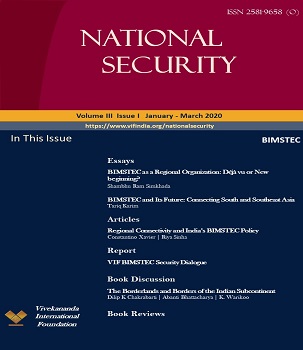About the Issue
India’s experience with regionalism has not been very happy. It joined SAARC knowing that its smaller South Asian neighbours wanted to both engage it and simultaneously collectively balance it. Over the years the smaller states even began lobbying to bring China into the organization for this purpose. The tensions between India’s goal of an integrated, peaceful and secure region from which all member states would gain and the goal of balancing by its neighbours was most visible in the case of Pakistan. Having joined SAARC Islamabad’s deep suspicions and hostility towards India overwhelmed the organization. Consensus was difficult to achieve and when finally attained implementation was blocked. Thus, connectivity plans and the Free Trade Area agreement that would have integrated the region’s vast markets, and promoted both economic and political cooperation were thwarted by Islamabad. Finally, it’s hostile involvement in terrorist operations against India in Mumbai in 2008, and a series of other attacks in the country, especially in Jammu and Kashmir, dealt a death-blow to SAARC. Connectivity, trade and cross border investments, and regional institutions are instruments to enhance overall security in its broadest sense. SAARC failed to achieve that goal.
India, under Prime Minister Narendra Modi, has now evolved an alternative vision. Combining his ‘neighbourhood first’ and Act East Policy, a new perspective on what would constitute a viable regional order has emerged. The orientation is towards the Bay of Bengal and the Indo-Pacific. Thus, new life was infused into the Bay of Bengal Initiative for Multi Sectoral Technical and Economic Cooperation (BIMSTEC) that lay moribund for many years without a vision or a strong central organization. BIMSTEC seeks to integrate the entire region spread around the Bay of Bengal that at one time was deeply integrated and prosperous, and to serve as a bridge between the Indian subcontinent and Southeast and East Asia.
Would this alternative vision of regionalism and regional order succeed? Would India be able to provide the vision, the active leadership and support to make the enterprise a success at a time when globalization and its offshoot, regionalism, are in retreat? Would the smaller states in the Bay be able to work together and overcome their insecurities and vulnerabilities, or would they persist with their balancing goal? These are issues that would determine the course that BIMSTEC takes in the coming decade. Much depends on whether it can create the institutional structure, the favourable policies and the techno-financial capacities for expansion of communication networks – roads, railways, ports, cyber--and enabling easy access to markets.
The current issue of National Security is devoted to examining the various perspectives on the BIMSTEC from within the region. They raise and answer many important questions. The essays and articles fill a genuine need to have a more engaged discourse and a wider body of literature on the theme. We hope the readers would find this Issue both relevant and rewarding.
Letters and Comments
Readers can share their views on National Security by e-mail to: the Editor, National Security. E-mail: [email protected]
For more information go through submission guidelines
Editor's Note
Editorial Board
International Editorial Advisory Board
Contents : Vol. III Issue I | January - March 2020
Essays
BIMSTEC as a regional organization:Déjà vu or new beginning? | Shambhu Ram Simkhada
BIMSTEC and its Future: Connecting South and Southeast Asia | Tariq Karim
BIMSTEC and S&T Cooperation: A Long Way Ahead | Kapil Patil
Submarines Gain Precedence in Bay of Bengal Naval Order of Battle | Vijay Sakhuja
Articles
Regional Connectivity and India’s BIMSTEC Policy | Constantino Xavier & Riya Sinha
Bangladesh beyond Borders: Its Trans-Regional Experience in BIMSTEC | Niloy Ranjan Biswas
Sri Lanka and BIMSTEC: Past, Present and Prospects for the Future | Bhagya Senaratne
A New BIMSTEC? : Reforms, Possibilities and Complexities | Angshuman Choudhury
Report
VIF-BIMSTEC Security Dialogue | Sreeradha Datta
Book Discussion
Book Reviews
Exploring new avenues of regionalism in South Asia | Alakh Ranjan
Conflicting Identities: Travails of Regionalism in Asia | Anurag Sharma
Important Information
- The copyright of National Security rests with VIF.
- Submissions to National Security should be original and not published elsewhere or submitted for publication elsewhere. The Publication reserves the first right of refusal.
- The submissions will be peer reviewed/refereed as well as undergo a plagiarism check.
- The Editor/Institute reserves the right to make a final decision on the publication, National Security post-review as well as the right to make alterations.
Selected contributors will be informed of the decision to include their articles in the forthcoming Publication via email. - If the author seeks to use an article published in National Security as part of another work, then you will need to get the requisite permission from the Publication, National Security.
All Rights Reserved.
No part of this publication may be reproduced, stored in a retrieval system, or transmitted in any form, or by any means- electronic, mechanical, photocopying, recording or otherwise- without the prior permission of VIF.


Would like to read it.
Post new comment